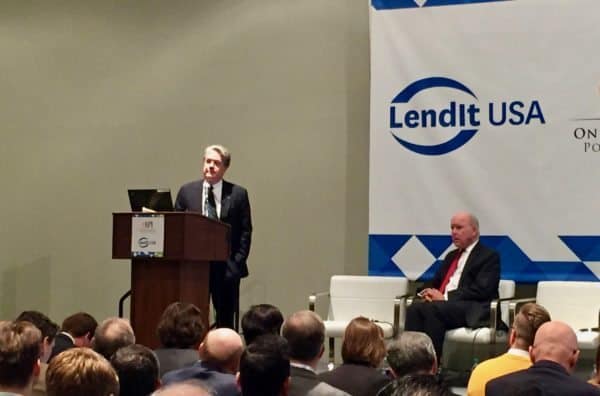Open Source Initiative
In the early days of computing, programmers and software developers shared their creations learned from each other and therefore advanced computing and software engineering to new heights.
Eric Raymond, a pioneer in open source initiative, detailed his thoughts in “The Cathedral and the Bazaar” popularized the open source movement and eventually co-founded the Open Source Initiative.
Eric Raymond famously coined an aphorism he dubbed “Linus’ Law.” Inspired by the father of the Linux operating system Linus Torvalds. As we speak, I am writing this article on a device made by Apple which runs on a variation of the Unix/Linux operating system. The foundation of this operation system is based on its origins in the open source movement in the 1980s and 1990s.
Back to Eric Raymond and his Linus’ Law. It states;
“Given enough eyeballs, all bugs are shallow”; or more formally: “Given a large enough beta-tester and co-developer base, almost every problem will be characterized quickly and the fix obvious to someone.”
In today’s Fintech ecosystem and the larger consumer privacy concerns, there are questions regarding the regulatory oversight looming over issues like the United States’ Office of Currency and Comptroller’s newly proposed Fintech charter.
Should we take a lesson from the open source movement of the 1980’s and 1990’s and rise to the occasion as an industry to embrace the ability to make our data and information transparent? To enable the inner workings of how we approve transactions, issue credit and making investments available for consumers, regulators, and competitors?
Is it not the time to consider how to apply Eric Raymond’s quote, “Given enough eyeballs, all bugs are shallow” to the larger Fintech ecosystem?
A Microsoft executive argued that “open source is an intellectual property destroyer, I can’t imagine something that could be worse than this for the software business and the intellectual-property business.”
However, Microsoft, IBM, Oracle, Google are just a few companies making a serious investment in the open-source market today.
Tony Casson and Patrick Ryan in their “Open Standards, Open Source Adoption in the Public Sector, and Their Relationship to Microsoft’s Market Dominance” argue several reasons for the adoption of open source.
In particular, they point out the following value propositions over proprietary formats:
- Security
- Affordability
- Transparency
- Perpetuity
- Interoperability
- Flexibility
- Localization
Undoubtedly, these issues plague many Fintech companies, their audiences, and their regulators. It is time for our industry to embrace our version of the open source initiative.

Data Dystopia
I recently gave a talk at E&Y and the Association of Certified Fraud Examiners in San Francisco on the latest Fintech trends. I used a few examples of Fintech inventions that are now part of our lives such as the mobile deposit functions in all banking apps and the ubiquitous ATMs.
Data is inevitably at the center of almost every economic, political issue in modern history. Most of the characters involved could be loosely lassoed into the general definition of Financial Technology or Fintech.
“Shadow Banking”
 Most of the traditional banking intimations are calling the new wave of Fintech platforms shadow banking. However, the term “shadow banking” coined by PIMPCO’s executive director Paul McCulley at FED annual meeting in 2007 says this;
Most of the traditional banking intimations are calling the new wave of Fintech platforms shadow banking. However, the term “shadow banking” coined by PIMPCO’s executive director Paul McCulley at FED annual meeting in 2007 says this;
”Shadow banking, as usually defined, comprises a diverse set of institutions and markets that, collectively, carry out traditional banking functions — but do so outside, or in ways only loosely linked to, the traditional system of regulated depository institutions. Examples of important components of the shadow banking system include securitization vehicles, asset-backed commercial paper [ABCP] conduits, money market funds, markets for repurchase agreements, investment banks, and mortgage companies.”
These non-traditional banking functions are designed to bypass regulation and rigorous auditing, compliance and reporting laws and eventually led to the mortgage crisis of 2007-2008 and the global recession that followed.
Many of my mentors, friends, and colleagues are still reeling from the great recession. Many lives and careers were destroyed because no one really knew what was being stuffed in the CDOs (credit default swaps) and SIV (Structured Investment Vehicle) popularized by the ENRON scandal of 2001.
Before we cry kettle is calling the pot black, the Fintech industry as we know it today is plenty creative regarding arbitraging regulation and exploiting loopholes. We, as an industry, should take a serious look at ourselves and start putting measures into place before another Enron, LTCM (Long-Term Capital Management), Mortgage Crisis hits our industry.
We are also a resilient and innovative group of technologies and finance professionals, and we must be on guard and defend our industry by sharing and collaborating.
We need to start working with other players in the field, our customers, and most importantly our government and regulators. Our economy is becoming global; our actions can be felt around the world overnight. We need to be ever so vigilant and bring about real-time time data sharing and collaboration.
Data Utopia “Lessons from History”
They say “necessity is the mother of invention” and there are many examples in the past decade in our industry that brought about fundamental changes to the way we protect our customers, provide access to financial regulators.
Early Warning – Collaborative intelligence, Trusted Exchange.
In the late 2000’s, I had a brief career working in the retail bank at JPMorgan Chase. I was put in charge of designing systems for their retail banking underwriting system and fraud prevention measures. We had a big target on our back, and every hacker, schemer, criminal and fraudster tried to penetrate our financial system, and some of these unsavory characters have become very good at it.
One of our problems was that we didn’t share data with other banks and the criminals took advantage of this situation for years. At the bank, we had huge issues with check fraud and identity fraud. At the time, Chase was responsible for opening up over 1 million checking accounts per month and millions of checks (deposits and in clearing (checks written by Chase customers to other banks)) were flying through our systems every day.
With new regulations such as Expedited Funds Availability Act, the banks had to issue immediate credit to customers that made deposits at branches and ATMs. This put an extreme amount of pressure for banks to clear checks in real time and their losses went through the roof with forged checks, bounced checks, etc. The losses experienced by Chase’s retail bank was quickly was reaching half a billion dollars a year.
Eventually, some of the major banks (not all) came together and formed an exchange called Early Warning Services or known now as simple Early Warning.
We worked diligently to start pulling demand deposit records and mainframe files relating to every physical check that was coming into and going out of the bank. It was a give-to-take system and it was not perfect.
All of the members in the exchange had serious doubts about competition. What if Bank of America knows all of my customer’s information? What if Washington Mutual starts poaching Wells Fargo’s best customers? Sometimes I felt sorry for the board members at Early Warning Services; nothing was really getting done and convincing each participating member was a negotiating nightmare.
Nevertheless, Early Warning was a success, and it demonstrated that even the largest financial initiations could work together for a common cause.
Eventually, the big banks saw the benefits of sharing data amongst each other through the exchange, more information such as account status, debit card transactions starting flowing in.
Although every member reserved the right to pull their data retroactively, no one did. Some 25 years later, Early Warning became the go-to spot to passively verify a customer’s checking account status. The consortium is not a perfect solution, only a handful of large banks in the U.S. participates in the contribution of the database and non-participating banks have to pay a fee to use the system and they don’t get the level of access as do participating banks.
“Soft Inquiries”
In the past few years, many of the online lending platforms have started to market to the same customers and compete for their business. Inadvertently and at times not, some consumers are taking multiple loans at the same time which is called “stacking”.
In cases where the customers can afford to make the monthly payment on their stacked loans, no harm no foul, however many of these consumers can’t make the payments, and thus everyone loses.
This is a self-inflicted industry in three folds. First, the credit bureaus are offering what is called a “soft inquiry”, the intended consequence is that the lenders can take a peek at the consumer’s credit report without having that inquiry registered as a hard inquiry on the consumer’s credit report. And because the presence of a hard inquiry is not shown on a consumer’s credit report, credit scoring systems such as Fair Isaac’s FICO score won’t be updated or calculated, and therefore a consumer’s credit score is not adversely impacted. Part of any credit scoring system’s algorithm takes
Part of any credit scoring system’s algorithm takes into consideration hard injuries as negative behavior.
We’ve all gotten declined letters from credit card companies, and one of the reasons in these letters is “too many inquiries in the last six months”.
Soft inquiries are great for consumers, but is it really?
The unintended consequences of soft inquiries are that no one knows what’s going on so when a consumer takes a subsequent loan from the next lender, that lender wouldn’t know that this consumer has already inquired for credit elsewhere and additional care should be taken when underwriting this customer.
Secondly, the credit bureau does not update their report in real time so even when there are hard inquiries being posted to a consumer’s report, the next lender wouldn’t able to see that because their data is as of yesterday, last week or worse.
Most of the online lenders use only one credit bureau, so the chances of you catching a stacker in real time is nearly zero.
The third reason why this is a self-inflicted issue is that everyone is going after the same customers.
When a customer sees that they are prequalified for a personal loan from LendingClub, Prosper, Avant, Marlette, etc., they will take them all, and everyone assumes that the consumer is wise enough to take just one loan and that loan is to refinance their other financial obligations namely a high rate credit card.
Enter the Marketplace Lending Association, Innovative Lending Platform Association and OLPI (Online Lending Policy Institute)
In 2016, some of the larger marketplace lenders finally came to terms with the reality that one of their biggest issues with credit is people’s ability to waltz around town and take out loans with 4 to 5 lenders in one sitting.
 Like Early Warning, the exchange set up by big banks, the Marketplace Lending Association shares industry-wide issues such as fraud and stacking related issues amongst their members Their founding members includes LendingClub, Prosper, and Funding Circle. According to my email exchange with the Executive Director Nat Hoopes, across sharing information amongst their membership is on their short-term agenda, Nat did mention a new effort being headlined by ID Analytics to start providing real-time information exchange to detect and prevent fraud and credit risk. Marketplace Lending Association is growing and has since expanded to 12.
Like Early Warning, the exchange set up by big banks, the Marketplace Lending Association shares industry-wide issues such as fraud and stacking related issues amongst their members Their founding members includes LendingClub, Prosper, and Funding Circle. According to my email exchange with the Executive Director Nat Hoopes, across sharing information amongst their membership is on their short-term agenda, Nat did mention a new effort being headlined by ID Analytics to start providing real-time information exchange to detect and prevent fraud and credit risk. Marketplace Lending Association is growing and has since expanded to 12.
Similar associations serving the small business lending market popped up last year. Kabbage, OnDeck, CAN Capital started the Innovative Lending Platform Association to combat similar situations that consumer lenders have experienced with stacking.
Most recently, Cross River Bank and Rocketloans, along with Boston University formed the Online Lending Policy Institute (OLPI) to start sharing compliance and related regulatory issues amongst its members.
They are creating an environment where Fintech companies in the marketplace lending arena have a healthy platform to discuss compliance related issues with the government.

Not too long ago, the OLPI invited Thomas J. Curry of the OCC to the regulatory track at LendIt USA 2017 in New York to discuss policy related issue with industry leaders.
Their forthcoming Marketplace Policy Summit 2017 will take place in Washington DC in September 2017.
Ready and willing
The technologist in all of us create many of the platforms traditional and other Fintech firms should use to bring trust and transparency to the forefront of our industry.
Take blockchain and its smart contract technology. Every piece of authenticated and verified identity could be parked on the blockchain like what uPort is trying to accomplish. Every Insurtech platform should take a look at blockchain seriously as a backbone. Every contract written, and signed, as a singular truth and it can’t be changed.eOrginal is another firm that stores each loan contract for any contract for that matter with a digital signature so that changes can’t be made and can be tracked from the beginning of that contract. The issue we’ve had with some marketplace lenders in 2016 relating to retroactively changing
eOrginal is another firm that stores each loan contract with a digital signature so that changes can’t be made and can be tracked from the beginning of that contract. The issue we’ve had with some marketplace lenders in 2016 relating to retroactively changing certain aspects of a loan document would have never happened.
If eOrginal becomes the industry standard and creates a view for the regulator like complying with the Home Mortgage Disclosure Act, our industry as a whole becomes more transparent and structurally sound.
Credit bureaus are also pitching in. TransUnion and IDAnalytics have all formed their own exchange to encourage more data sharing and transparency amongst companies providing credit to consumers.

Era of full transparency
Can Fintech companies lead the way of bringing about full transparency to traditional banks?
Banks appreciate technology as much as any other industry, and they are already learning from Fintech firms. JPMorgan Chases’s partnership with OnDeck is just the beginning of traditional banks getting a taste of tech they wish they had.
Timothy Li is founder and CEO of Kuber Financial. He has over 12 years of experience in Finance, Technology, Risk Management and is passionate about changing the finance and banking landscape. Li is also the creator of Fluid App, the next generation of credit products for Generation Z and co-founder and President of P2P Protect, a company that offers P2P insurance products in the US.



